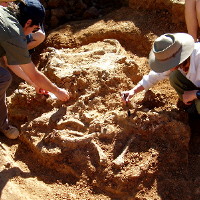
Excavating the Diprotodon skeleton.

Ernie Camp uncovers the Diprotodon skeleton with a heavy digger.
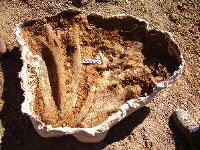 Fossil bones wrapped in a protective plaster jacket ready for the trip to Mt Isa. Fossil bones wrapped in a protective plaster jacket ready for the trip to Mt Isa.
|
Expedition to Floraville 2011
By Phil Creaser
05 September 2011
A highly successful field trip to Floraville was held with the main aim being the excavation of the Diprotodon skeleton first discovered on the 2010 field trip.
After three days of careful work more than 80% of a complete skeleton was recovered, with the possibility some of the remaining associated smaller pieces may be found next year.
The bones, some of which were encased in plaster jackets, are currently stored in Mt Isa. They will take up to two years to fully prepare and conserve.
The fieldwork was made possible with support and help from property owner Ernie Camp and his family and an Xstrata North Queensland Community Program grant.
In addition to this excavation, further collecting was done at other sites in the region and a skull of a large zygomaturine diprotodontid - possibly Kukaodonta robusta - was recovered from a site near the Leichhardt River.
|
 |
Research showcased at CAVEPS 2015
20 September 2015
The 15th biennial Conference on Australasian Vertebrate Evolution, Palaeontology and Systematics (CAVEPS) was held in Alice Springs on 1-5 September 2015. |
More news >>
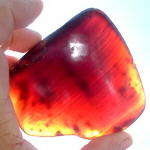
Main research program: Cape York amber
Fragments of precious amber found on the remote beaches of Cape York contain the remains of plants and tiny animals millions of years old.
Read more >>
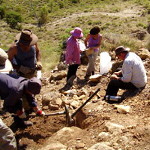
Main research program: Riversleigh
The rocks at Riversleigh are rich in well-preserved fossil remains of the ancestors of the modern Australian fauna and entirely new kinds of animals previously unknown to science.
Read more >>
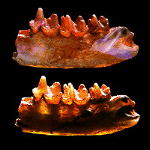
Main research program: Lightning Ridge
Deposits at Lightning Ridge in northern New South Wales yield some of the rarest, most beautiful and valuable fossils in the world.
Read more >>
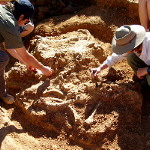
Help support Australian palaeontological research
The CREATE fund has been established to facilitate and conduct research into our past. Individuals can help through donations.
Read more >>
|











